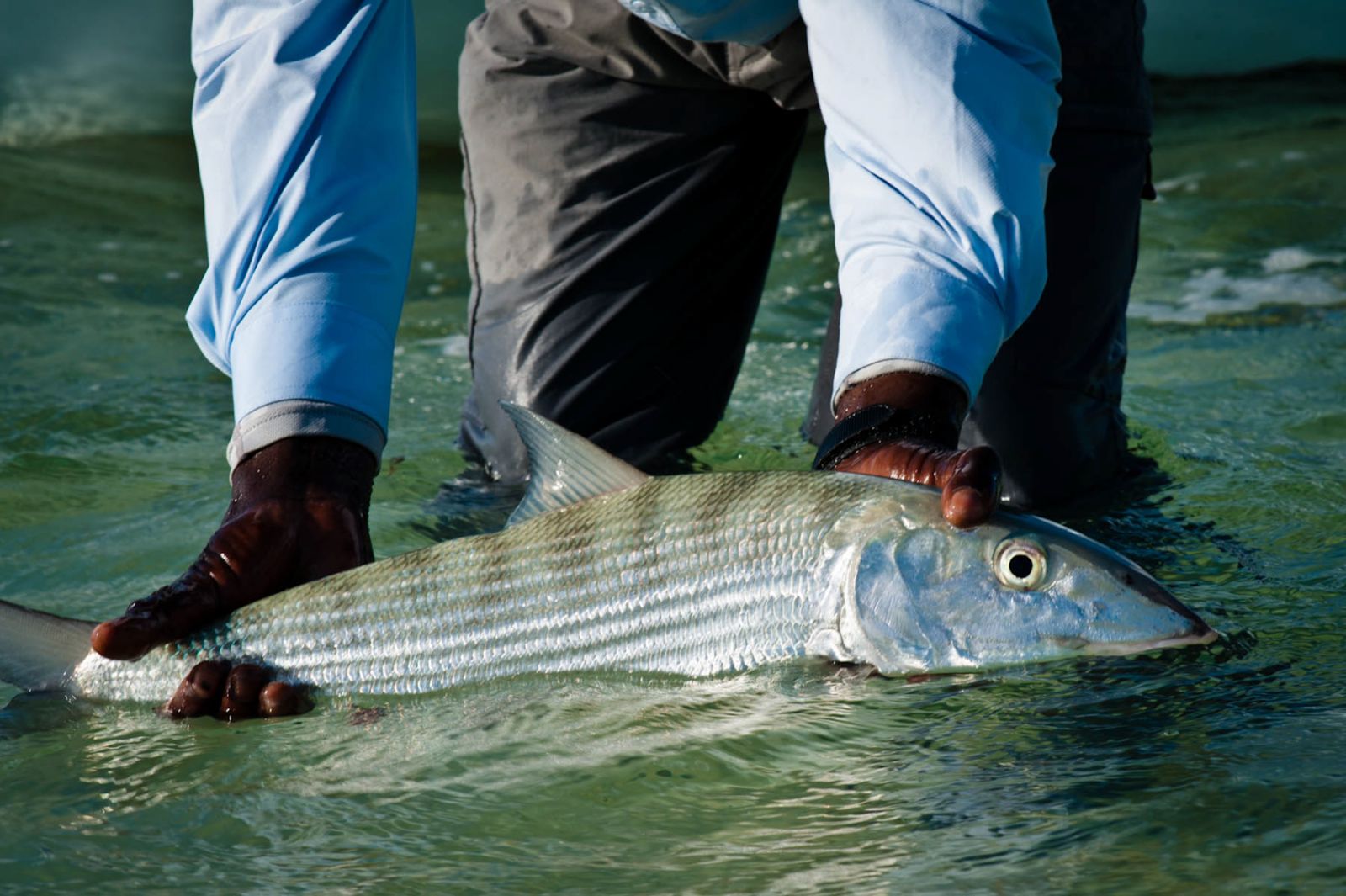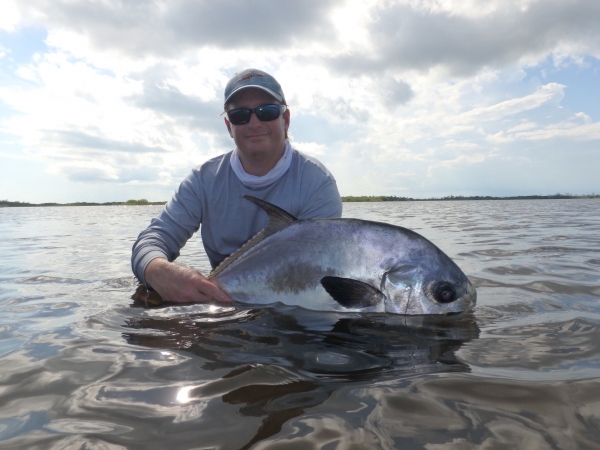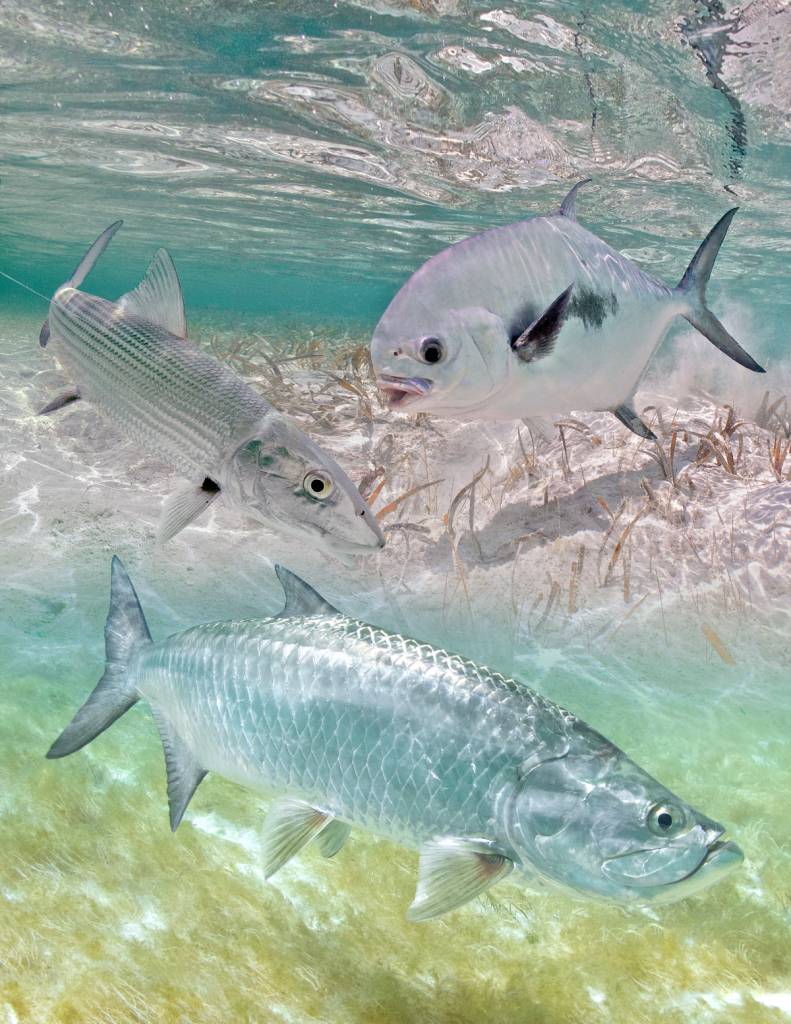Whose Fish Are They Anyway?
The 6th International Bonefish & Tarpon Trust Symposium will share some answers.
Years ago, BTT Founding Member Billy Pate asked “Are our fish their fish?”. Billy was talking specifically about tarpon. He was concerned about whether the harvest of tarpon in South America had an impact on Florida’s fisheries. He wanted to know if apparent declines of tarpon in some of his favorite fishing spots in Florida were the result of local or regional issues. It would be great if Billy was around today – he had no idea how big of a question those five words really entailed.
What started out as a pretty straightforward project to track the movements of adult tarpon with satellite tags has ballooned into a much more complex and revealing program to figure out just how connected our fisheries are. And it’s not just limited to tarpon. As you will learn at the upcoming 6th International Bonefish & Tarpon Trust Symposium, BTT and others are examining connectivity for tarpon, bonefish, and permit. The implications for conservation are big.
Without giving too much away in advance of the Symposium, the findings so far are pretty amazing. (pc: Pat Ford)
Tarpon
 Spurred by Billy’s question, BTT helped to fund years of satellite tracking of adult tarpon by University of Miami. The satellite tags showed that large adults were capable of long-distance migrations – the Florida Keys to the Mississippi River Delta, and the Keys to Chesapeake Bay, but that some fish seemed to prefer sticking around Florida. And fish in Belize seemed happy at home – none of the fish tagged there left Belize. his was a great first step – it showed that yes, indeed, there were some broader regional connections, but there was a lot of complexity in the background.
Spurred by Billy’s question, BTT helped to fund years of satellite tracking of adult tarpon by University of Miami. The satellite tags showed that large adults were capable of long-distance migrations – the Florida Keys to the Mississippi River Delta, and the Keys to Chesapeake Bay, but that some fish seemed to prefer sticking around Florida. And fish in Belize seemed happy at home – none of the fish tagged there left Belize. his was a great first step – it showed that yes, indeed, there were some broader regional connections, but there was a lot of complexity in the background.
The next step was to up the ante by using acoustic telemetry to track tarpon. Why was this upping the ante? Acoustic tracking allows us to track tarpon of almost any size – from 20 pounds and up. And the tags last five years or more. The early results are pretty amazing, with tarpon of just 50 pounds making some trips that have surprised everyone. You can get the full scoop at the Symposium when our collaborators from University of Massachusetts present the latest.
Whenever we search for answers to questions that are important to the conservation of tarpon, bonefish, and permit, we never rely on just one approach, or one type of information. The data from satellite and acoustic tracking gives us a good idea of tarpon movements, but this doesn’t fully answer Billy’s question. To add complexity to Billy’s question: do enough tarpon migrate long distances to create one, large, regional population; what about tarpon larvae – when tarpon spawn, are their larvae carried far enough by currents to mix everything into one population? One way to address this complexity is through genetics.
The two-year Tarpon Genetics Program, a collaborative study between BTT and the Florida Fish and Wildlife Conservation Commission (FWC), recently concluded, providing illuminating results that will help build effective regional management and conservation plans for tarpon. Many of you helped by collecting a scale from tarpon that you caught and mailing it to us. Between your efforts and the database of genetic samples from their ‘cheek scrub’ tarpon genetic study (many of you participated in both studies), more than 23,000 samples were collected! Samples were collected from around the Caribbean Sea, Gulf of Mexico, southeastern US, and even the west coast of Africa. The findings? There is only one genetic population of Atlantic tarpon. This means that there is a high enough level of gene flow for there to be no genetic difference based on where tarpon were sampled. This connectivity could occur through migrations, such as from Florida to Chesapeake Bay, and by larvae being transported by ocean currents. A tarpon larvae could be transported a long way in the 30 days from hatching to when they transform into juveniles.
Bonefish
 Around the same time that BTT began funding the tarpon satellite tagging work, BTT also began funding research, also at University of Miami, to figure out bonefish movements in the Florida Keys. More than 7,000 bonefish were tagged. The majority of fish (>70%) were recaptured close to where they were tagged, but a few had traveled from the Upper to Lower Keys. We didn’t know it then, but the knowledge we’ve gained since that study suggests those traveling bonefish were on a spawning migration.
Around the same time that BTT began funding the tarpon satellite tagging work, BTT also began funding research, also at University of Miami, to figure out bonefish movements in the Florida Keys. More than 7,000 bonefish were tagged. The majority of fish (>70%) were recaptured close to where they were tagged, but a few had traveled from the Upper to Lower Keys. We didn’t know it then, but the knowledge we’ve gained since that study suggests those traveling bonefish were on a spawning migration.
Ongoing work in The Bahamas, where more than 13,000 bonefish have been tagged, is also finding that most bonefish stick to small areas. More than 70% of bonefish were recaptured very close to where they were tagged. How close? You’ll have to come to the Symposium to find out! The tagging work in The Bahamas is also revealing spawning migration pathways and links to spawning locations.
So it seems that bonefish stick to small home ranges except to migrate to spawn, but could their populations ne connected too? After all, once bonefish spawn, the eggs hatch and the larvae drift in the open ocean for between 41 and 71 days! So some larvae could easily end up traveling long distances.
Once again, we need multiple types of data. A recently completed study of how ocean currents likely transport bonefish larvae from spawning sites to juvenile habitats – do they stay local or travel to distant locations – is giving us some guidance on these connections. Which places are most connected, which spawning sites are most likely connected to the Florida Keys? Find out at the Symposium.
The next important step in figuring out bonefish connectivity is to again examine their genetics through the Bonefish Genetics Program. Once again, BTT partnered with FWC, and asked for your help. You came through in a big way. Nearly 13,000 bonefish fin clips were collected for genetic analysis! The first step was to determine which species were collected. You’ll remember from past work that genetics were used to identify four species of bonefish in the Caribbean, but that one species – Albula vulpes – made up more than 98% of the flats fishery. Now that all of the samples have been identified, the Albula vulpes samples are being analyzed to determine whether there is one large population, like for tarpon, or if there are multiple related populations.
Because guides and anglers were so great at collecting samples, twice as many samples were collected than we had planned for. Fortunately, our FWC partners were able to find additional funds to analyze ALL of the samples. The negative is that we’ll have to wait longer for the results. The positive is that the results will be a lot more powerful due to the larger sample size.
Here’s a way to think about how sample size can influence conclusions. Let’s say you drive to New York City determined to figure out the genetic makeup of the population. By chance, you park in Little Italy, where you collect a bunch of samples that tell you that NYC is strongly influenced by people of Italian descent. But then you get more money, drive around some more, and park in Chinatown. Now your results show that NYC has strongest influences from descendants from Italy and China. But then you get more samples from more areas, and your assessment of the genetic makeup of NYC improves until you finally get a large enough sample size to feel comfortable in your assessment. Not only that, within each neighborhood that you originally thought was pretty uniform, as you got more samples you saw other regions mixed in as well – maybe German-Italian, or Irish-Italian.
In short, we’re holding out for a better assessment of bonefish genetics by allowing a larger sample size to be analyzed. It’ll be worth the wait.
But when you come to the Symposium you’ll still learn a lot about bonefish genetics that will surprise you.
Permit
 We’re not quite as far along on understanding permit movements, but things are ramping up quickly. Guides and anglers have been helping us tag permit with dart tags for more than five years. So far, the results are a mixed bag. Most permit are recaptured close to where they were tagged, similar to bonefish. But there have been some long-distance recaptures from permit that were tagged on the flats and recaptured on reefs, probably on the reefs to spawn.
We’re not quite as far along on understanding permit movements, but things are ramping up quickly. Guides and anglers have been helping us tag permit with dart tags for more than five years. So far, the results are a mixed bag. Most permit are recaptured close to where they were tagged, similar to bonefish. But there have been some long-distance recaptures from permit that were tagged on the flats and recaptured on reefs, probably on the reefs to spawn.
Building on the dart tagging project, the Permit Acoustic Tracking Project has revealed some really interesting information about permit movements in the Lower Keys – about home ranges, links between flats and reefs, and more. But you’ll have to wait for the Symposium to get the full report. Just like fishing for permit on the flats – when you finally catch one, it was worth the wait.
And at the Symposium we’ll also learn about some new research on permit from Belize. Not only are researchers studying habitat use, they are using genetics to figure out how permit within Belize as well as throughout the region are related. It’s going to be really interesting to see those results!
So why should we care if fisheries and populations in different regions are connected? Loss of spawning fish in one location could impact another location. Overharvest in one location could reduce or prevent migrations to another location. All of the flats fisheries are managed locally – Florida Keys fisheries are managed by Florida, Abaco fisheries are managed by The Bahamas. If the populations are self-reliant, and marginally connected, then this management strategy is fine. But if there are closer connections, then we have to think about regional management. There will be plenty of discussions on these topics at the Symposium.
I can’t imagine that Billy thought his simple question would lead to so much.
And we haven’t even touched on the connections between juvenile nursery habitats and the fisheries, and the need to identify and protect these habitats. If you come to the Symposium, you’ll learn more about this, too.




